Digging for toads - creating new habitat for Natterjacks
10/01/2019 in Conservation
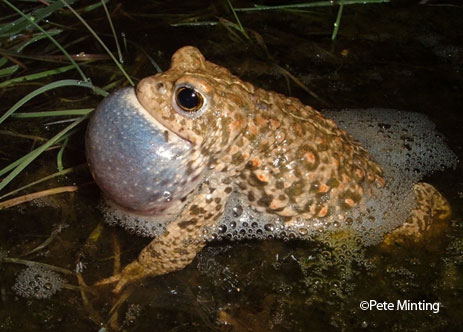
Above: Europe's loudest amphibian, the Natterjack toad, is also Britain's most endangered.
On a very dreich and rainy morning last October Natterjack toad expert, Pete Minting, set out with Tom Doherty-Bone (RZSS amphibian conservation specialist) and myself with the aim of creating new habitat for Britain’s most endangered amphibian, the Natterjack Toad. At the best of times the Solway coast can be a rather wet and dreary stretch of coastline but on this day the weather seemed to be especially malicious.
These small toads are Europe’s loudest amphibian and can be heard from over a mile away. The native population of Natterjack toads has been in decline for nearly a century due to habitat loss, however, recent conservation efforts have provided reason to be hopeful for this species' future. Across Britain, conservation success has been achieved through creating new pond habitats that increase the number of breeding sites for this toad. Currently the outlook for Natterjack populations along the Solway coast is a bit more precarious, with further safeguards needed to sustain its fragmented populations. With this in mind we carried out habitat creation work at a new site, thanks to funding secured by RZSS through the British Herpetological Society, near Carsethorn in the hope of creating good nursery site for the toads and a further link between isolated populations.
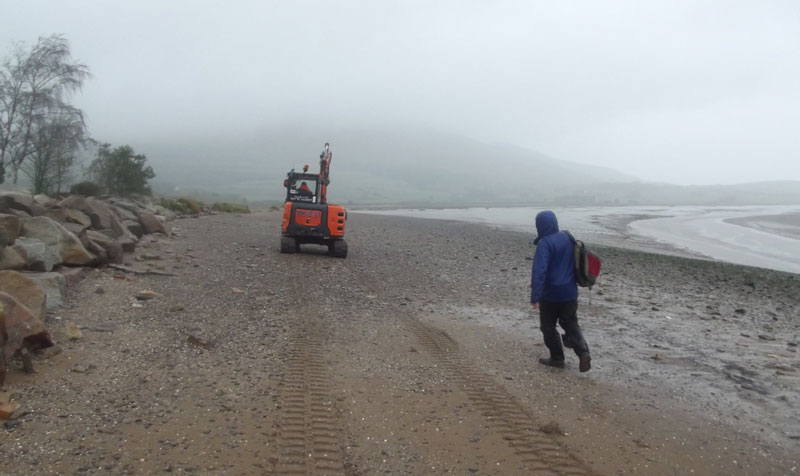
Above: Moving the pond lining to the new Natterjack toad habitat
We began by shifting heavy pond lining (made of clay) to the site with the help of local farmer Jamie, and had a shallow pond dug out with a digger. This particular toad species has some very specific requirements when it comes to breeding sites. Natterjacks have adapted to live in coastal regions where the ponds are usually disturbed by sand blows or occasional inundations with sea water. The Carsethorn location was chosen as does get occasional inundations from the sea. They also prefer slightly warmer water with little to no vegetation, hence the pond can’t be too deep. Their tadpoles also need freedom from other frog and toad species that could threaten to push them out. Whilst working on the site, we met a Common Toad which emphasised the need to have the pond near the sea in order for the the salt water to deter other native species from settling in the same sites. During the habitat creation, we were extremely grateful to have Pete’s expert knowledge on hand to ensure we were able to meet this species specific needs.
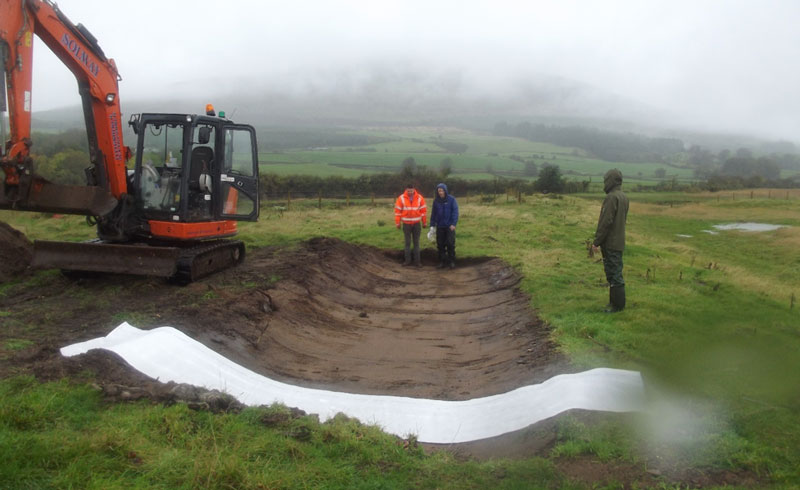
Above: The shallow Natterjack pond is excavated and the clay lining is applied.
Once the earth was scraped out by the digger we lined the pond with the clay liner. This was no small task as there were 19 rolls of liner each weighing roughly 25kg. After battling through the wind and rain we finally got the pond lined and put a layer of earth on top to make it look less artificial. After the final layer of soil had been patted down we were all thoroughly drenched but with smiles on our faces and feeling a real sense of accomplishment. The pond was then ready to capture rain water through the winter season.
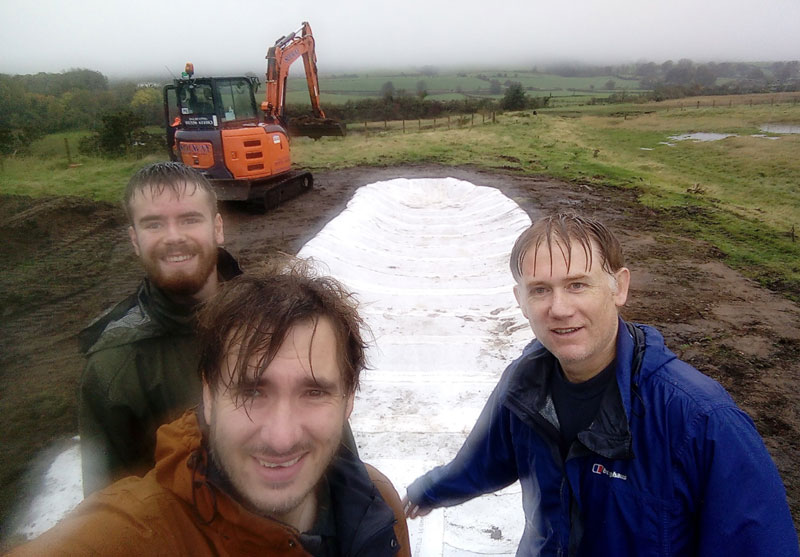
Above: The team braving the conditions. From left to right: Craig Close, Tom Doherty-Bone and Pete Minting
Below: A sight that we hope to see more of in years to come - Natterjack toad spawn.
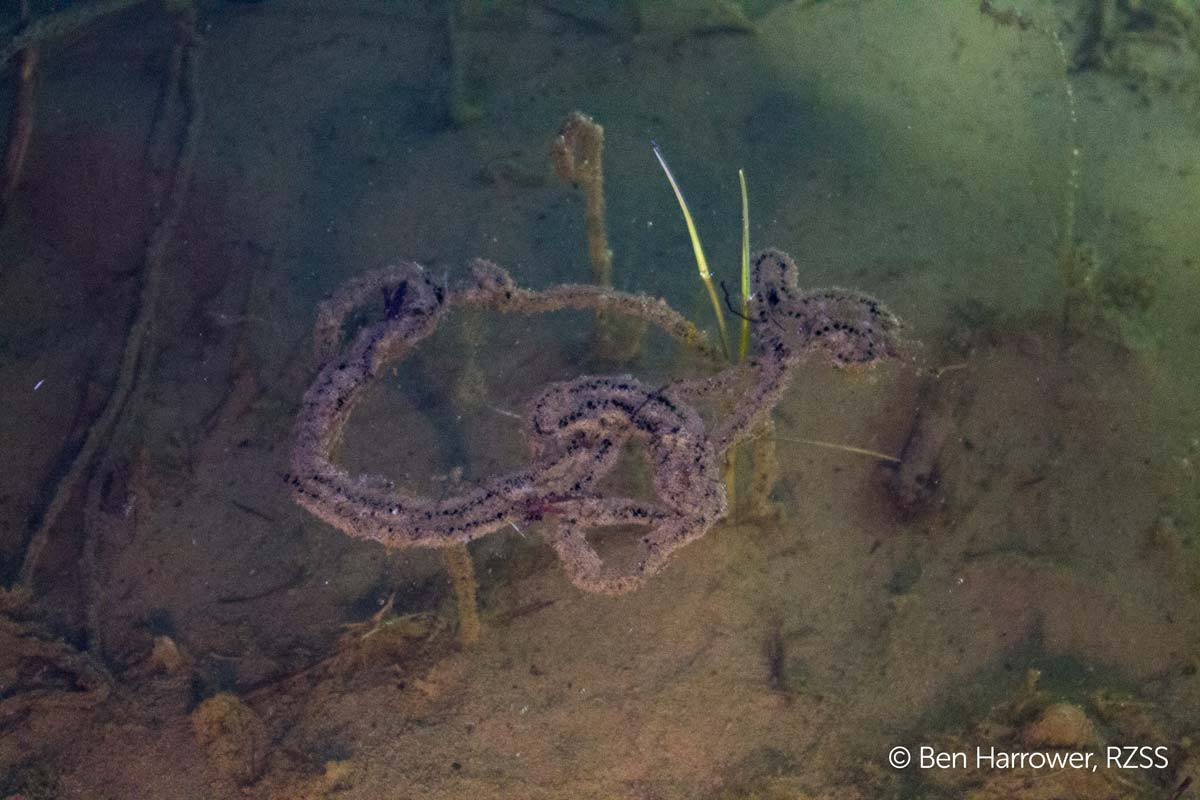
The work done that day may not seem like a lot, certainly not to some of the locals who were perplexed we were putting so much effort into this for one pond. However, this is one step toward a bigger project to protect the Natterjack in the Solway coast. The Natterjack toad is our most endangered amphibian and hopefully projects such as this can help to reverse their decline and allow these special toads to flourish once more. Come future Springs, a night air filled with the croaky song of the Natterjack will definitely add another element to the breath-taking natural beauty of the Solway Firth.
Craig Close
RZSS Edinburgh Zoo Presentations Team, Reptiles and Amphibians

This RZSS amphibian habitat restoration project was made possible thanks to support from the British Herpetological Society.
Get involved - help support our work by becoming an RZSS member!
Join a growing community of nearly 30,000 individuals who are not only helping to support our conservation work but also enjoy a range of benefits such as unlimited entry to our two parks.
Featured Articles

An update from the Budongo Forest
19/04/2024 in Conservation

Edinburgh Zoo named best zoo in Scotland
15/04/2024 in Edinburgh Zoo

























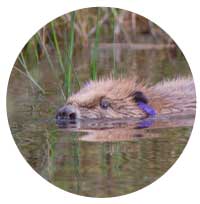

Follow EZ